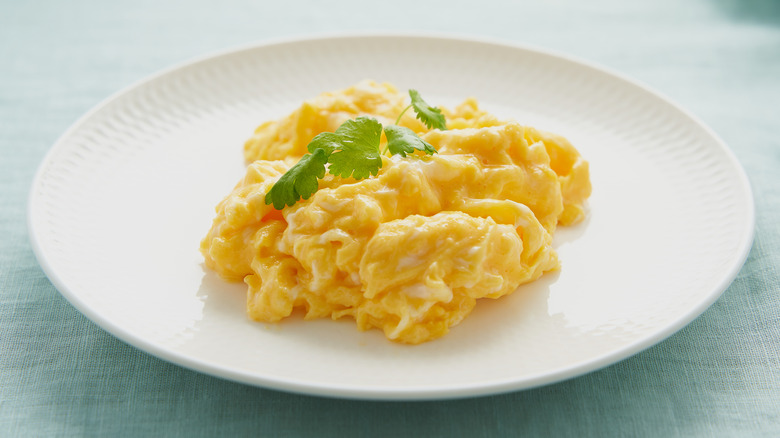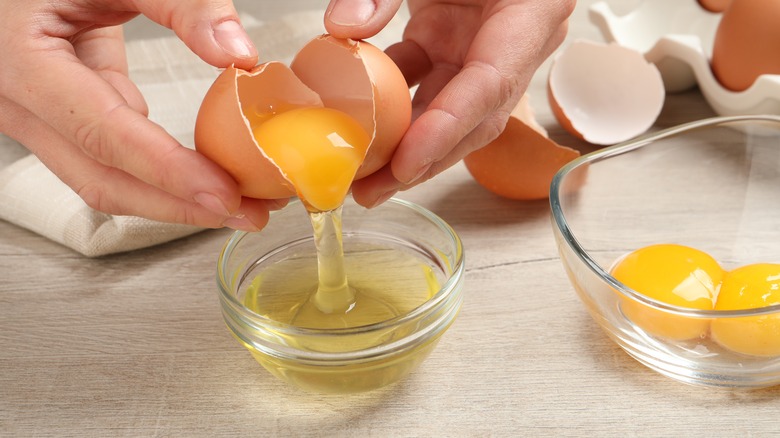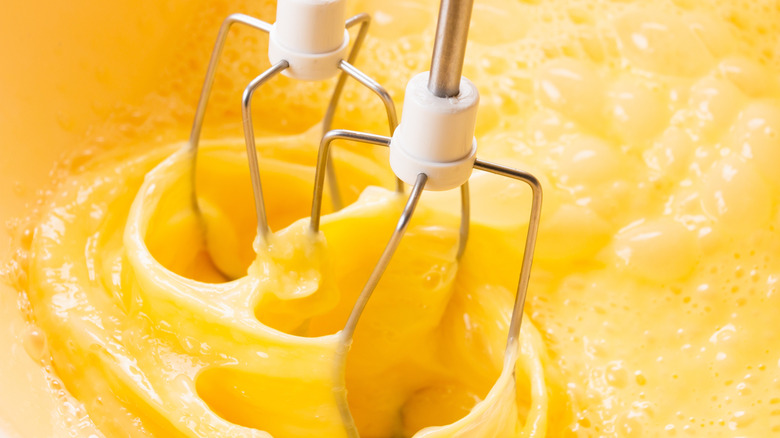Drop Your Eggs In The Blender For The Fluffiest, Creamiest Scramble
Some believe that the mark of a great cook lies in their ability to perfectly execute the simplest dishes. Many people think greatness is found in complexity, but it's actually rooted in basics like cooking an over-medium egg. Speaking of eggs, what could be simpler — or more exquisite — than a serving of fluffy scrambled eggs? The ingredient list is short: eggs, fat, salt, and pepper. Oh, and one more thing for the savvy home cook: The secret to airy scrambled eggs is air itself. One of the most effective ways to incorporate air into your scrambled eggs is by using a blender.
A blender performs the same two tasks essential for making scrambled eggs — mixing the ingredients and aerating the mixture — in much less time than manual whisking. If you're cooking for a crowd, a blender can also handle a greater quantity of eggs than anyone would want to whisk by hand. Blending eggs for a few seconds before scrambling them virtually guarantees a trip to Fluffy Town.
Why introducing air makes for a fluffier scramble
The secret to fluffy omelets, scrambles, meringues, and soufflés lies in the egg whites — and how the water inside of them interacts with air — not the yolks. Introducing air bubbles into the egg whites starts the process of unfolding its protein strands. Certain amino acids in egg proteins have an affinity for water, while others repel it. When you introduce air into the mix, the water-repellent strands stretch out toward the air bubbles, while the water-attracted strands remain firmly in place. When this happens, an interconnected framework of elongated protein strands that traps air, expands when heated, and cements in place upon cooking is formed.
When it comes to solidifying these interconnected egg proteins, applying heat during cooking achieves a similar effect — except without the benefit of incorporated air bubbles. The result is a flatter, denser scramble lacking the dreamy, airy lightness.
Be mindful of how long you blend your eggs
As we all know, blenders use rapidly spinning blades to chop food into increasingly smaller pieces, sometimes until they fully liquefy. This spinning action also creates a vortex, drawing the mixture toward the center, which allows it to circulate. This vortex essentially creates a mini tornado within the blender, incorporating air into the food in the process. While this is all great news for fluffy omelet fans, too much blending can cause you to make a classic scrambled egg mistake.
While beating eggs incorporates air into them, it's possible to overbeat egg whites, causing them to curdle and expel water due to an overload of proteins. This results in rubbery, grainy eggs — exactly what you're trying to avoid. If you decide to use a blender for your morning scramble, limit the blending time to just a few seconds. If you're aiming for peak fluffiness, you can separate the eggs, whip the whites until stiff, and then carefully fold the yolks back in. Consider this route if you're more interested in a culinary experiment than a quick, impressive breakfast.


